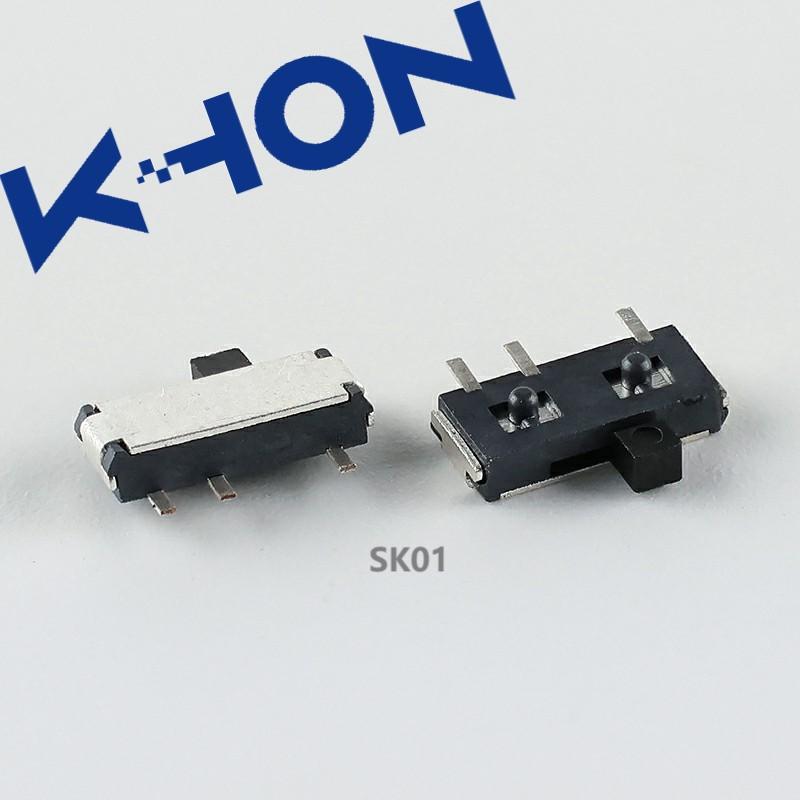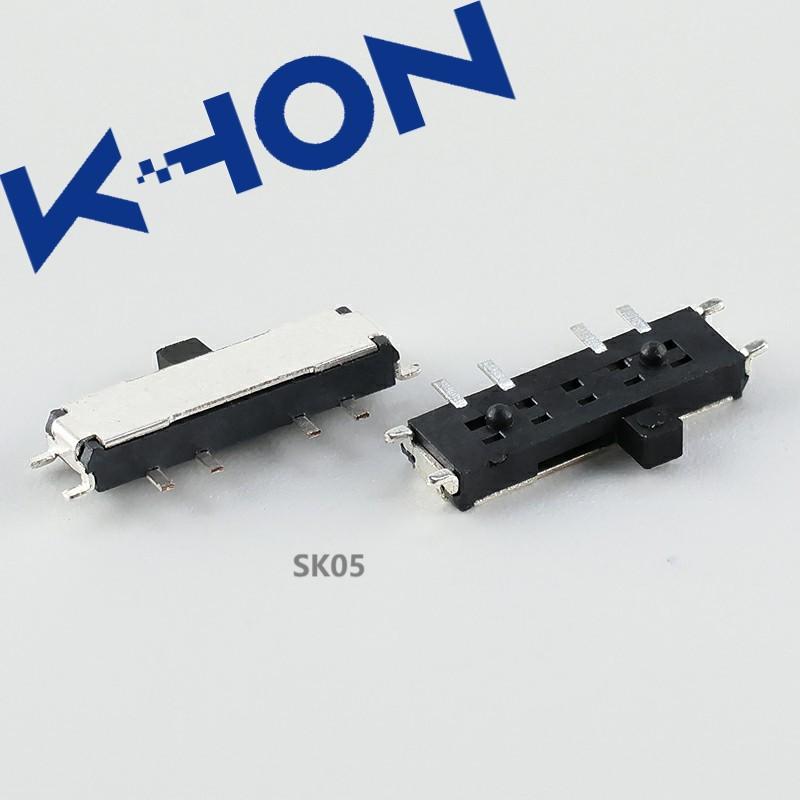What is a Slide Switch?

What is a Slide Switch?
A slide switch is a type of electrical switch that’s commonly used to control the flow of electricity in electronic devices. It’s defined by its method of operation: a slider moves from position to position in a linear direction, allowing circuits to open and close.
The switch typically has a small lever or slider that can be moved between different positions to open or close the circuit. Slide switches are often used to turn devices on or off, select different operating modes or activate specific functions.
They’re intuitive and reliable little gadgets that help you control the electrical flow with a simple slide.
What is a Slide Switch Used For?
They’re used in a variety of electronic devices for different purposes. Some common examples include:
●Flashlights: Slide switches are often used to turn flashlights on and off.
●Remote controls: Many remote controls for electronic devices use these switches to control power or select different functions.
●Toys: They can be found in toys to control various features or turn the toy on and off.
●Consumer electronics: Devices like small radios, portable music players and other consumer electronics may use them for power control and mode selection.
●Electronic appliances: Some kitchen appliances or small electronic devices may use them as a part of their control mechanisms.
●Electrical equipment: They’re also used in more industrial applications to control electrical circuits in machinery or equipment.





What Types Are There?
There are several types of slide switches, each designed for specific functions. Here are a few common types:
●Single-Pole, Single-Throw (SPST): This is the most basic type with two positions — on and off.
●Single-Pole, Double-Throw (SPDT): This switch has three positions — one common terminal and two others, allowing it to connect the common terminal to either of the other two.
●Double-Pole, Single-Throw (DPST): This switch has two independent circuits, each with its own on/off position.
●Double-Pole, Double-Throw (DPDT): Similar to SPDT, but with two separate circuits like DPST. It has two common terminals, allowing it to connect each common to one of two other terminals.
●Three-Position Slide Switch: This type has three positions and can be used for more complex functions or modes.
●Miniature Slide Switch: These are compact switches often used in small electronic devices.
●Surface Mount Slide Switch: Designed to be mounted directly on the surface of a circuit board.
●Toggle Slide Switch: Combines the functionality of a slide switch with a toggle switch.




Pros & Cons
Pros
●Simple Operation: They’re straightforward to use, making them user-friendly.
●Compact Size: Many are small and compact, making them suitable for use in limited space.
●Cost-Effective: They’re cost-effective and economical, which is advantageous for mass production.
●Reliability: They’re reliable and durable, providing a stable and consistent connection when operated within their specified parameters.
●Variety of Types: There are various types, allowing for versatility in design and functionality.
Cons
●Limited Positions: Many offer a limited number of positions, which may be a limitation for devices requiring multiple functions.
●Limited Current Capacity: Some may have limitations on the amount of current they can handle, restricting their use in high-current applications.
●Not Ideal for High-Frequency Switching: Slide switches may not be the best choice for applications where rapid or frequent switching is required.
■


